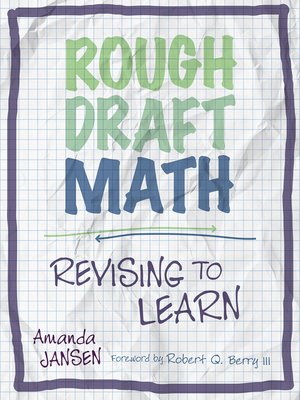
Sign up to save your library
With an OverDrive account, you can save your favorite libraries for at-a-glance information about availability. Find out more about OverDrive accounts.
Find this title in Libby, the library reading app by OverDrive.



Search for a digital library with this title
Title found at these libraries:
| Library Name | Distance |
|---|---|
| Loading... |
Many students, especially as they get older, only share their thinking in math class when theyre sure they have the right answer. This means that some students hardly talk at all. Yet, talking and writing about in-process and unfinished ideas are vital to learning mathematics. How can we meet this challenge? Amanda (Mandy) Jansen and her collaborating teachers have developed a breakthrough approach: expand the idea of 'rough drafts' to the mathematics classroom.
In Rough Draft Math, Mandy shares the power of infusing math class with the spirit of revision so that students feel comfortable thinking aloud as they talk to learn through problem-solving rather than talking only to perform right answers. In the process, a class of students becomes a community of mathematical thinkers, and teachers gain access into their students ideas and understandings.
Inside youll find the following:an exploration of what the idea of revision could mean for math teaching and learning classroom vignettes to see rough draft math in action specific teaching techniques to encourage and practice rough draft thinking voices of teachers and students in rough draft classrooms Mandys reflections about her own teaching as a work in progress In Rough Draft Math, Mandy shows how to create a classroom culture in which your students will feel more comfortable expressing their partial understandings and in-process thinking, and then continually revising that thinking as they build deep, conceptual understanding of mathematics.
In Rough Draft Math, Mandy shares the power of infusing math class with the spirit of revision so that students feel comfortable thinking aloud as they talk to learn through problem-solving rather than talking only to perform right answers. In the process, a class of students becomes a community of mathematical thinkers, and teachers gain access into their students ideas and understandings.
Inside youll find the following:







